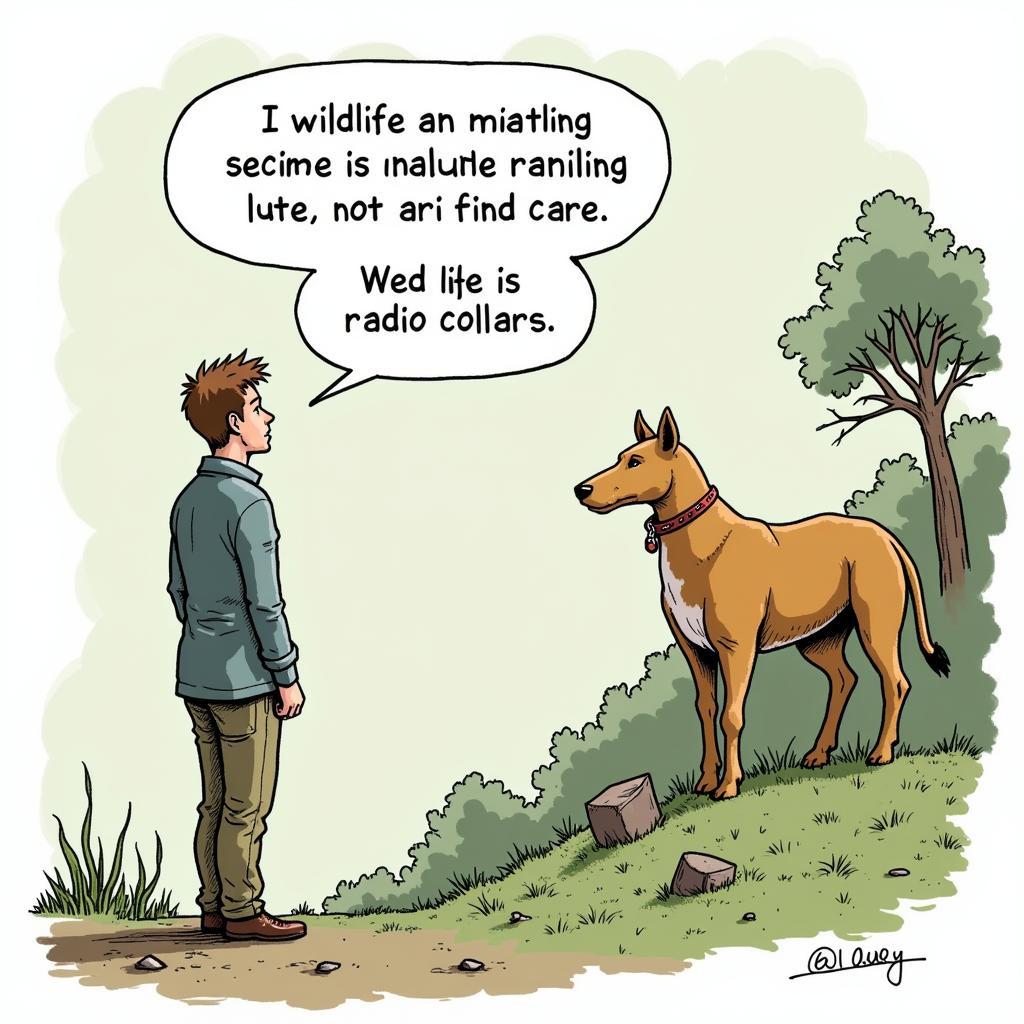Radio Collars, small electronic devices attached to animals, have revolutionized wildlife research and conservation. They provide valuable data on animal movement, behavior, and habitat use, helping scientists and conservationists make informed decisions about protecting endangered species and managing wildlife populations. This article explores the fascinating world of radio collars, their applications, benefits, and the ethical considerations surrounding their use.
How Radio Collars Work: Unveiling the Technology
Radio collars transmit a unique signal that can be detected by a receiver. This signal allows researchers to locate the animal and track its movements over time. The frequency of the signal is specific to each collar, allowing researchers to track multiple animals simultaneously. The range of the signal depends on the type of collar and the terrain, but can extend for several kilometers. Modern radio collars often incorporate GPS technology, providing even more precise location data. These GPS-enabled collars can also collect data on the animal’s activity levels, body temperature, and even physiological parameters like heart rate.
Applications of Radio Collars: From Research to Conservation
Radio collars are invaluable tools for a wide range of wildlife research and conservation projects. They are used to study animal migration patterns, home range sizes, and habitat preferences. This information helps researchers understand how animals interact with their environment and how they are affected by human activities. Radio collars also play a crucial role in monitoring endangered species, helping conservationists develop effective strategies for their protection. For instance, they can be used to identify critical habitats that need to be preserved or to track the movements of animals that are being reintroduced into the wild.
Radio Collars in Conservation: Protecting Endangered Species
The use of radio collars has been instrumental in the conservation of numerous endangered species. By tracking the movements of these animals, researchers can gain insights into their behavior, identify threats, and develop targeted conservation strategies. This technology has been particularly effective in protecting large carnivores, such as tigers and lions, which often come into conflict with humans.
Ethical Considerations: Balancing Research and Animal Welfare
While radio collars provide invaluable data, it is essential to consider the ethical implications of their use. The capture and collaring process can be stressful for animals, and there is always a risk of injury or infection.  Cân nhắc về mặt đạo đức khi sử dụng vòng cổ vô tuyến Therefore, it’s crucial to minimize these risks by using appropriate capture techniques and ensuring that the collars are properly fitted and do not interfere with the animal’s natural behaviors. Researchers must adhere to strict ethical guidelines and obtain necessary permits before conducting any research involving radio collars.
Cân nhắc về mặt đạo đức khi sử dụng vòng cổ vô tuyến Therefore, it’s crucial to minimize these risks by using appropriate capture techniques and ensuring that the collars are properly fitted and do not interfere with the animal’s natural behaviors. Researchers must adhere to strict ethical guidelines and obtain necessary permits before conducting any research involving radio collars.
“The ethical use of radio collars requires careful consideration of the potential impacts on individual animals,” says Dr. Nguyen Van A, a leading wildlife biologist at the Vietnam National University. “We must always strive to minimize stress and ensure that the benefits of the research outweigh any potential harm.”
The Future of Radio Collars: Technological Advancements
The technology behind radio collars is constantly evolving. Newer collars are smaller, lighter, and more sophisticated, allowing researchers to collect even more detailed data. Some collars now incorporate sensors that can measure environmental variables, such as temperature and humidity, providing a more comprehensive understanding of the animal’s environment. “The development of bio-logging collars, which can record a vast array of physiological and environmental data, is opening up exciting new possibilities for wildlife research,” states Professor Tran Thi B, a renowned expert in animal ecology.
Conclusion: Radio Collars and the Future of Wildlife Conservation
Radio collars have become an indispensable tool for wildlife research and conservation. They provide valuable insights into animal behavior, habitat use, and the impacts of human activities. While ethical considerations are paramount, the benefits of using radio collars, especially for endangered species, are undeniable. As technology continues to advance, radio collars will undoubtedly play an increasingly important role in protecting our planet’s biodiversity.
FAQ
- How long do radio collars last? The battery life of a radio collar varies depending on the type of collar and its settings, but typically ranges from a few months to several years.
- Are radio collars harmful to animals? While the collaring process can be stressful, researchers take precautions to minimize any potential harm.
- How are radio collars attached to animals? Animals are typically captured and sedated before a collar is fitted.
- What kind of data can radio collars collect? Radio collars can collect data on location, movement, activity levels, and even physiological parameters.
- How much do radio collars cost? The cost of a radio collar varies depending on its features and technology, ranging from a few hundred to several thousand dollars.
- How do researchers find animals with radio collars? They use receivers that detect the unique signal transmitted by each collar.
- Can radio collars be used on any animal? Radio collars can be used on a wide variety of animals, from small mammals to large carnivores.
Other questions about radio collars
What are the limitations of using radio collars?
How does the terrain affect the range of a radio collar signal?
What are the latest advancements in radio collar technology?
Are there alternatives to radio collars for tracking wildlife?
Need help?
When you need support, please contact Phone Number: 0909802228, Email: doibongda@gmail.com Or visit us at: 101 Đ. Lý Chiêu Hoàng, Phường 10, Quận 6, Hồ Chí Minh, Việt Nam. We have a 24/7 customer service team.